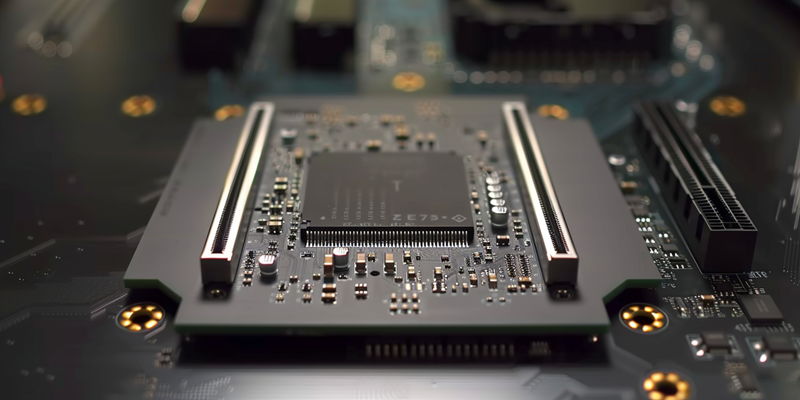Excitement is mounting within the realm of computer hardware as AMD gears up for the rollout of its next-generation Zen 5 CPUs. In what could potentially signal an earlier than anticipated debut, a recent BIOS update from leading motherboard manufacturer Asus has sparked speculation among technology enthusiasts and industry insiders. Should these advanced processors hit the market ahead of schedule, the competitive dynamics within the CPU sector may experience a significant shift.
AMD’s Zen architecture has already made a substantial impact on the market, pushing the boundaries of processing power and energy efficiency. The forthcoming Zen 5 CPUs are expected to continue this trend, potentially setting new performance benchmarks. An early release fueled by hints from a BIOS update is noteworthy because it suggests that AMD is not only on schedule but possibly ahead, enabling them to get a jump on their competition.
What this means for consumers and professionals alike is the potential for access to more powerful computing capabilities sooner than anticipated. As anticipation builds, the technology community is closely watching for any further signs of the Zen 5 CPUs’ arrival, eager to see how AMD will once again redefine performance standards.
BIOS Update: A Prelude to Zen 5’s Debut
Unveiling Through Firmware
The latest BIOS update from Asus for their ROG Crosshair and Strix X670E motherboards has created quite a stir in the tech community. The update reveals the injection of AGESA version 1.1.7.0, which is significant as it paves the way for compatibility with AMD’s Zen 5 architecture. It’s a notable move, as firmware updates of this nature often signal that new hardware is not just forthcoming but could be on our doorstep sooner than anticipated.
While no official announcements have been made yet by AMD about the launch of their next-gen CPUs, the presence of such groundwork in Asus’s firmware certainly hints that we might soon lay eyes on the successors to the Ryzen 7000 series, potentially called the Ryzen 8000 or 9000 series. In the world of computing, where each step is meticulously calculated, the release of a BIOS update supporting a future architecture like Zen 5 is a clear indication that the new chips are almost ready for their debut. The tech industry is now abuzz with excitement and speculation as this update aids enthusiasts and professionals alike to anticipate and prepare for the bleeding edge of processing power that AMD’s next iteration promises to deliver.
A Timeline Slightly Distorted
Despite AMD’s initial schedule indicating the Zen 5 CPUs’ release for the second half of 2024, a BIOS update hints at a different story, suggesting an advancement in the timeline. There’s chatter about these CPUs gearing up for mass production sooner than expected, which could mean their arrival might be anticipated as early as Q3. While there are contrasting views, with some sources stating that mass production would only commence in that quarter, these developments point toward a possible showcase at a major tech event like Computex. This leads to speculation that the official launch could indeed happen in Q4, or AMD might reveal the CPUs early, holding off on immediate availability. The exact timeframe remains in the realm of conjecture, yet the prospect is exciting for tech enthusiasts eagerly awaiting AMD’s next-gen processors.
Market Dynamics: AMD versus Intel
AMD’s Swift Strike
AMD’s accelerated release of its Zen 5 architecture promises to reshape the competitive landscape with Intel. While AMD may leap ahead, Intel’s Arrow Lake CPUs encounter potential release setbacks, possibly pushing their debut to as late as 2025. This delay might give AMD an unprecedented opportunity to dominate the market. Intel’s interim solution, the Raptor Lake Refresh, only serves to provide nominal performance enhancements. Thus, if AMD efficiently capitalizes on the early arrival of Zen 5, it could leave Intel struggling to regain its footing. Such a scenario underscores the intense rivalry in the CPU industry, where timing and technological advancements are critical in securing market leadership. AMD’s potential early move might, therefore, inflict a strategic blow on Intel, as it risks falling significantly behind in innovation and market presence.
Continuous Competition and its Consequences
The fallout from AMD’s strategic maneuver will be fascinating to observe. If they successfully launch Zen 5 ahead of Intel’s next big thing, they will not only secure current market dominance but also disrupt Intel’s future plans. To further turn the tides, AMD is likely to follow up with the release of Zen 5 X3D processors embedded with 3D V-Cache by early 2025, further complicating Intel’s competitive response.
The early hints at a Zen 5 launch usher in not just excitement for tech enthusiasts but a crucial period for the CPU market. The interplay between technological advancements and market timing cannot be overstated in an industry where consumer demands and competitive pressures are ever-increasing. The looming presence of Zen 5 on the horizon stands to redefine the landscape even before its arrival, setting the stage for a dynamic evolution in the silicon showdown between AMD and Intel.

